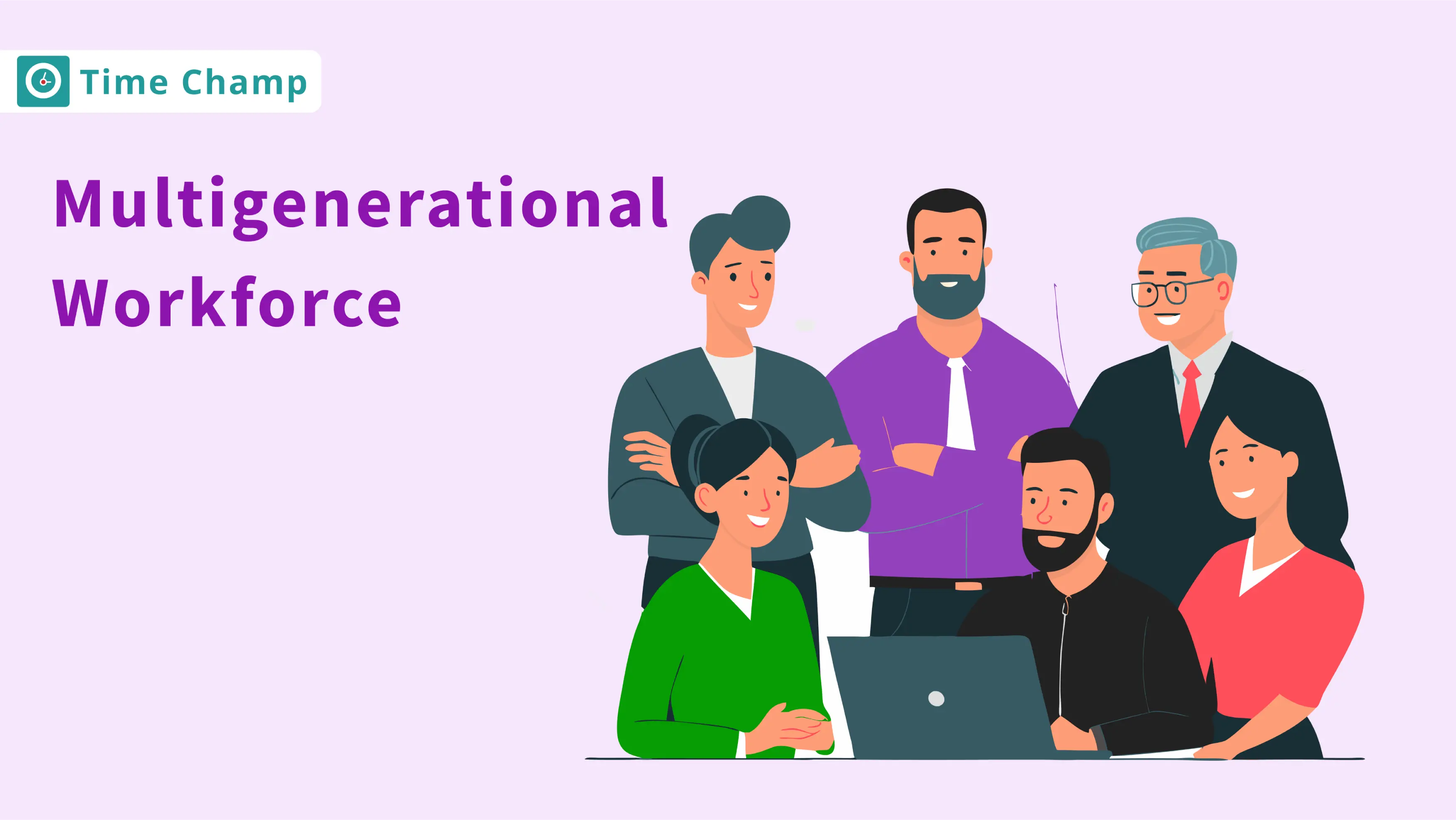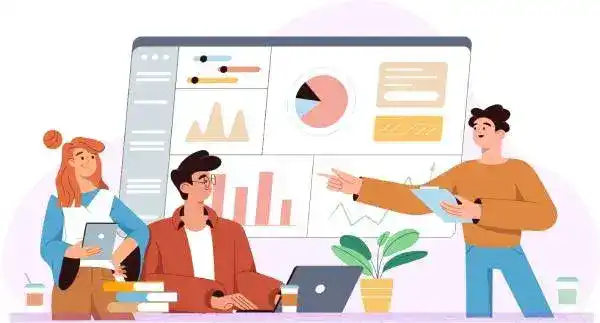Finding it challenging to manage a multigenerational workforce where Baby Boomers, Gen X, Millennials, and Gen Z have different expectations, values, and work styles? The key to overcoming this challenge is building a workforce with shared goals, flexible policies, and new engagement strategies.
This approach transforms generational differences into strengths that ensure collaboration, innovation, and business growth.
In this blog, you'll learn how to engage, promote, and develop a multi-generational workforce by learning best practices and tips, advantages, and risks.
What Does a Multigenerational Workforce Mean?
A multigenerational workforce refers to a workplace that includes employees from different age groups and generations, such as Baby Boomers, Generation X, Millennials, and Generation Z, working together under the same organisation. It has a combination of diverse experiences, values, skills, and work styles that every generation brings, which creates opportunities in management, communication, and collaboration.
This diversity can enhance creativity, capacity to solve problems, and flexibility within the organisation. This workforce management will enable you to transform the perceived challenges into opportunities to enhance collaboration, creativity, and productivity.
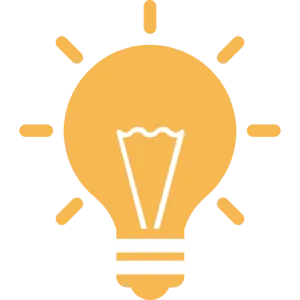
What are the 7 Tips to Create a Multi-generational Workforce?
Managing a multi-generational workforce is about balancing the various skills, experiences, and work styles. The following are 7 tips to create and manage an effective workforce:
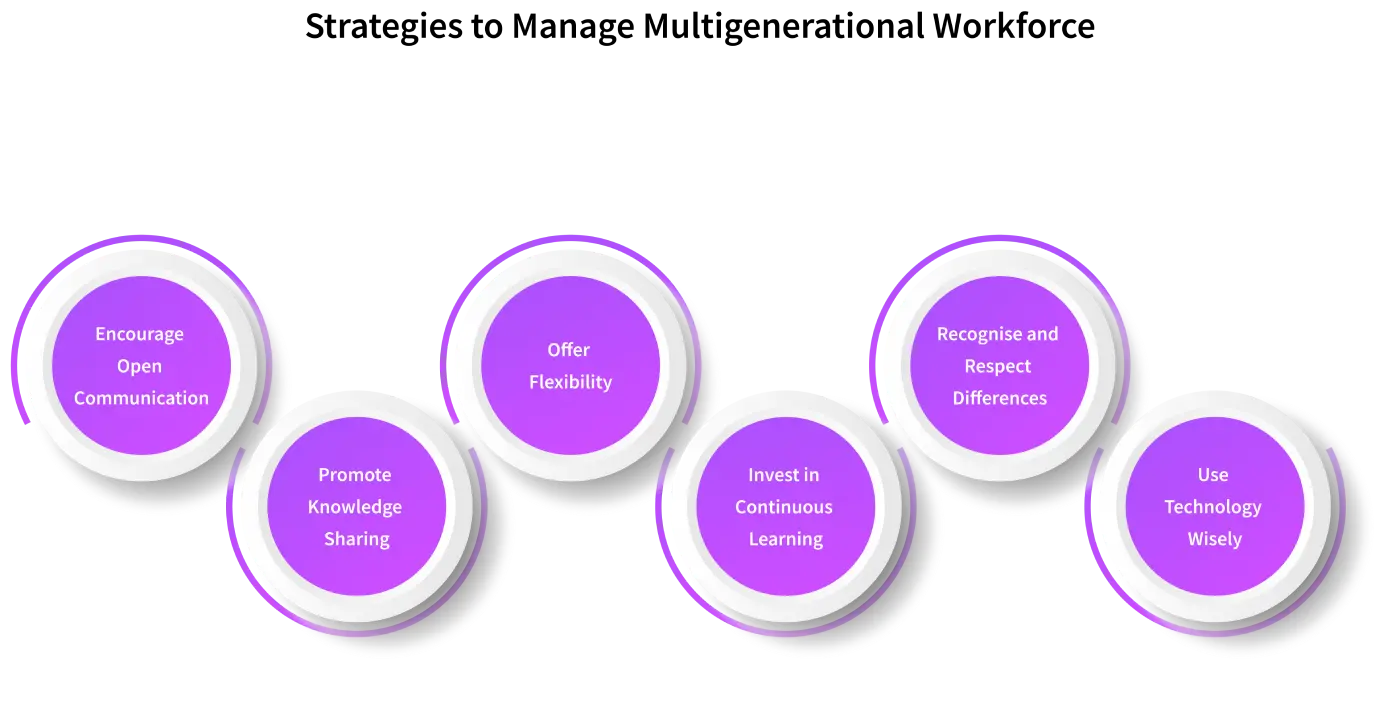
1. Encourage Open Communication
Promote an organisational culture where employees feel free to exchange ideas, enquire about questions, and offer feedback. Communication preferences among different generations might not be similar, some will use emails, and some will use chat applications or in-person discussions. Regular check-ins and team meetings ensure that no employee is neglected. Multiple communication channels help to eliminate generational differences.
2. Offer Flexible Work Options
Provide flexible work options, such as remote work and adaptable hours, to suit different lifestyles. Senior staff members might like a more predictable schedule, whereas younger staff might seek more flexible work schedules. Allowing employees to decide their working times would contribute to increased productivity and reduced stress .
3. Create Mentorship Opportunities
Encourage knowledge-sharing between all the generations. Baby Boomers and Gen Xers can train younger staff on industry knowledge, whereas Millennials and Gen Z can guide older employees on technology. Mentorship enhances relationships, skills, and creates a learning and respect culture. Structured mentorship programs also allow everyone to grow and develop skills in their career.
4. Customise Training for Everyone
Understand that the generations have different ways of learning. Provide a combination of face-to-face workshops, online courses, and direct instructions. Providing options will allow you to grow well, and tailored development will make employees give their best to the organisation. Regularly gathering feedback on training programs helps improve learning experiences for all generations.
5. Value Each Generation’s Strengths
Appreciate the special talents, experiences, and insights that every generation has. This type of diversity establishes respect and decreases stereotyping as well as enhances teamwork. Reward your employees by identifying them through programs or events to feel appreciated and contribute wholeheartedly. An inclusive culture will also enhance morale and loyalty among the different generations.
6. Promote Teamwork Across Generations
Assign the cross-generational workforce to projects. They bring various perspectives together, which usually results in a more innovative solution, problem-solving, and more effective decision-making. Promote intergenerational trust and understanding through team-building activities. Distribution of roles and consideration of every individual contribution improve team performance .
7. Use Effective Technology and Tools
Select the workplace tools and platforms that are user-friendly to all generations. Although younger generations can easily adjust to the newest technologies, older employees might require additional assistance and education. The right technology can enhance cooperation, streamline your operations, and maintain teams that are working from different locations.
How to Manage a Multigenerational Workforce
Focus on leadership and operational strategies to handle a team with different age groups.
-
Encourage Open Communication
Communicate through various channels, including emails, chat applications, and frequent meetings. Ensure that every employee is comfortable sharing ideas or concerns, irrespective of their generation. Conduct some regular feedback sessions to avoid issues and build trust within the team. -
Promote Knowledge Sharing
Add mentoring and reverse mentoring programs to facilitate learning between each other. Older employees offer experience and context, and young employees present new technologies and new approaches. Working together across the generations can create new ideas. -
Offer Flexibility
Offer remote work, hybrid schedules, and flexible hours to accommodate different life stages and priorities. This flexibility boosts satisfaction, reduces stress, and improves retention across all generations. Clear expectations and goals ensure productivity growth with the flexible arrangements. -
Invest in Continuous Learning
Provide workshops, online education, and practical training to support employee development. Offering multiple learning styles, such as visual, hands-on, or discussion-based, ensures employees are interested and secure. Promoting self-managed learning gives employees the ownership of their development. -
Recognise and Respect Differences
Respect different work styles, priorities, and motivations. Modify leadership styles to fit the needs of individuals without discriminating against them. The appreciation of minor successes and personal efforts assists in the creation of respect across generations. -
Use Technology Wisely
Implement solutions that enhance workflow and communication and offer education, so every generation is aligned. Simplified technology makes it efficient without causing irritation and isolation. The frequent update of tools and constant support make the workforce connected and productive.
How to Engage a Multigenerational Workforce
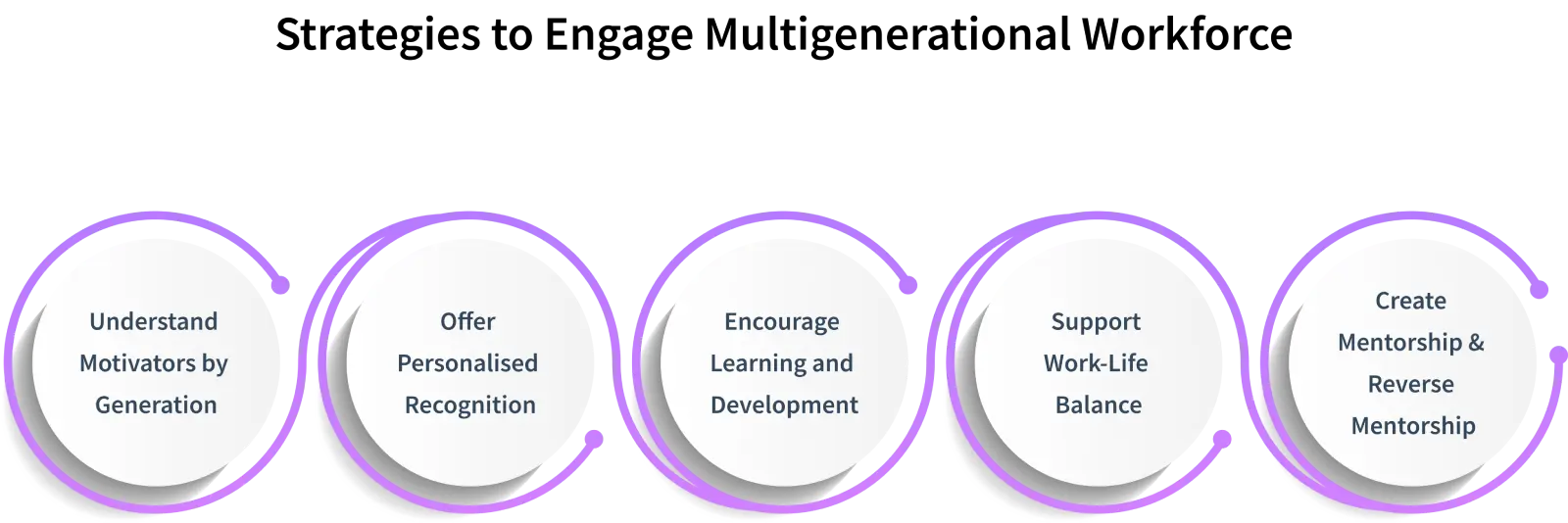
Focus: Motivation, involvement, and retention strategies to keep employees invested and productive.
1. Understand Motivators by Generation
Different generations are driven by various factors, some need stability, others development, or significant contribution. Being aware of such differences can help you to differentiate recognition, opportunities, and support to ensure employees are engaged.
Baby Boomers: Recognition for experience, opportunities to mentor, and stability.
Generation X: Autonomy, clear goals, and work-life balance.
Millennials: Purpose-driven work, career growth, regular feedback, and learning opportunities.
Generation Z: Technology integration, collaboration, diversity, and meaningful impact.
2. Offer Personalised Recognition
Recognition is an effective motivator of engagement, though not all the employees react to it equally. Individual recognition will demonstrate that you appreciate them individually and encourage them to give their best.
- Recognise employees in public to those who appreciate social acknowledgment.
- Give private compliments or thank-you notes for employees who dislike being the centre of attention
- Provide skill development or career growth opportunities as rewards for growth-oriented employees.
3. Encourage Learning and Development
Learning and growth are key motivators for employees of all ages, but each generation may prefer different methods of learning. Giving numerous opportunities is an effective way to keep everyone involved and make them feel appreciated.
- Offer various learning options to your employees to study in the most suitable manner, using online courses, workshops, and hands-on guidance.
- Encourage cross-generational learning to assist younger staff in offering technical expertise and older staff in offering helpful industry expertise.
- Connect learning with employees’ career development by showing how training can result in promotions, new responsibilities, or personal growth objectives.
4. Support Work-Life Balance
Promoting work-life balance is also vital to ensure that employees are not burnt out across different generations. Employees have varying priorities in life, and therefore, policies must be flexible and inclusive.
- Provide flexible schedules, work hours, or hybrid schedules to fit individual needs.
- Allow employees to work at home where necessary, with appropriate tools and communication assistance.
- Offer solutions such as fitness memberships, mindfulness seminars, or mental health counselling to promote the overall well-being of the employees.
- Train employees to balance work hours, take breaks, and disconnect after work to eliminate stress.
5. Create Mentorship & Reverse Mentorship
Mentorship programs assist in overcoming generational barriers and enhancing engagement and collaboration, as well as career advancement. The combination of employees across the generations gives an opportunity to exchange knowledge, skills, and experiences in a meaningful way.
- Connect older staff with new staff to exchange knowledge of the industry, problem-solving skills, and professional advice.
- Treat mentorship as a way to develop trust, relationships, and morale in the team.
- Communicate the successful results of mentorship programs to motivate participation and recognise contribution.
What are the Benefits of a Multi-generational Workforce?
A multi-generational workforce brings together employees with different skills, experiences, and perspectives. The following are the main advantages of a multi-generational team:
Different Ideas and Perspectives
A multigenerational workforce brings together employees with diverse experiences, backgrounds, and ways of thinking. This diversity encourages innovative solutions, new approaches to problem-solving, and strategic decision-making. It will also give you access to a wide range of knowledge that promotes creativity and improves performance .
Better Teamwork and Collaboration
Collaborating with the employees of other generations will help to understand and value different working styles. This enhances communication, better relationships, and greater team collaboration, leading to more effective teamwork and increased output.
Knowledge Sharing
Employees from different generations can exchange skills, expertise, and best practices. Experienced employees can train the new employees on industry knowledge and how to think strategically, and the new employees can provide new technologies and modern working techniques to the industry, this way, knowledge sharing leads to continuous learning and development.
Employee Engagement and Retention
A multigenerational workforce allows you to address the needs of different age groups. When you make your employees feel valued, respected, and supported, it enhances their job satisfaction, motivation, and loyalty, which helps to retain the best employees and minimise turnover rate.
Innovation and Adaptability
The knowledge of experienced employees can be combined with the new mindset of younger employees to encourage innovation. Such a combination allows you to adapt fast to changes, implement new ideas efficiently, and stay competitive in this business environment.
Flexibility in Problem-Solving
Different generations deal with problems differently. Older employees can be guided by the established methods, whereas younger workers can engage in the innovative or technology-based approaches.
This variety of thinking enables you to approach problems in different aspects, which enhances the decision-making process and outcomes.

What are the Challenges of Multigenerational Workforce?
The multi-generational workforce comes with numerous advantages, yet it is also accompanied by several challenges that you need to effectively control. Here are the challenges that usually arise from maintaining a workforce:
1. Communication Gaps
Different generations often prefer different ways of communicating. The older employees can use emails or even face-to-face communication, whereas younger workers can prefer instant messaging or collaboration applications. If these issues are not handled properly, they lead to confusion, a lack of information, and productivity drops.
2. Different Workplace Expectations
Employees from different generations may have varied ideas about work-life balance, career growth, recognition, and flexibility. Some of them can be more concerned with stability and long-term positions, whereas others can be oriented towards fast promotion or meaningful employment. Aligning these expectations can be challenging for you.
3. Encouraging Flexibility Across Ages
Employees of a younger age usually accept flexible hours, remote work, and innovative work patterns, and older employees might like conventional time schedules and organised routines. Thoughtful leadership and policies are required to encourage all employees to adapt and respect their preferences.
4. Integrating Multiple Work Styles
Different employees have unique approaches to getting work done. Some employees prefer detailed planning, and some are flexible and creative in solving problems. Combining these diverse work styles will make teams productive without causing conflict and frustration.
5. Guiding a Diverse Workforce
It is very important to balance the needs, motivation, and feedback preferences of the multigenerational team. You should be flexible in offering direction, keep the employees engaged, and make every employee feel that they are important and part of the team. Managing a multigenerational workforce can be much easier with the right workforce management tools.
Best Tool for Managing a Multigenerational Workforce!
One of the best tools to manage a multi-generational workforce is Time Champ . It helps you to bridge the communication gaps, align expectations, and easily track team productivity.
Flexible scheduling, task management, and detailed performance analytics allow you to accommodate various work styles, track engagement, and make sure that all employees are recognised and valued. With the features of Time Champ, you can create a more flexible, motivated, and productive team.
Conclusion
A multigenerational workforce is a source of new skills, insights, and ideas that can lead to innovation, cooperation, and expansion. You can leverage the generational differences by ensuring open communication, flexible policies, mentorship, and customised training. Engaging with diversity, mutual respect, and continuous learning are the values that make every worker feel appreciated and contribute to the maximum potential of the team.
Frequently Asked Questions
Encourage open communication and listening. Establish clear guidelines on how to work respectfully and offer tips on how to deal with generational differences to minimise tension. With this approach, small issues can be prevented by regular check-ins and mediation, before turning into bigger ones.
Use user-friendly tools that help you to manage tasks and track time efficiently. One of the most useful tools in managing a multigenerational workforce is Time Champ , which makes time tracking, task management, and team coordination easy to ensure that all generations remain organised and productive.
Set specific objectives, provide guidance, and acknowledge improvement. Individualise strategies according to the values of each generation, growth, recognition, autonomy, and work. These steps help to keep your team engaged, motivated, and focused on business goals.
Ask for employee feedback, check the policies occasionally, and offer flexibility in order to support the needs of different generations. This assists in building a healthier work environment where all the employees are valued and respected.
Track employee involvement, satisfaction, performance, and comments to determine the effectiveness and how well your team is facilitating teamwork, collaboration, and diversity. Use these insights to continuously improve your strategies and address the skill gaps.
Here are Some Related Articles You may Find Interesting
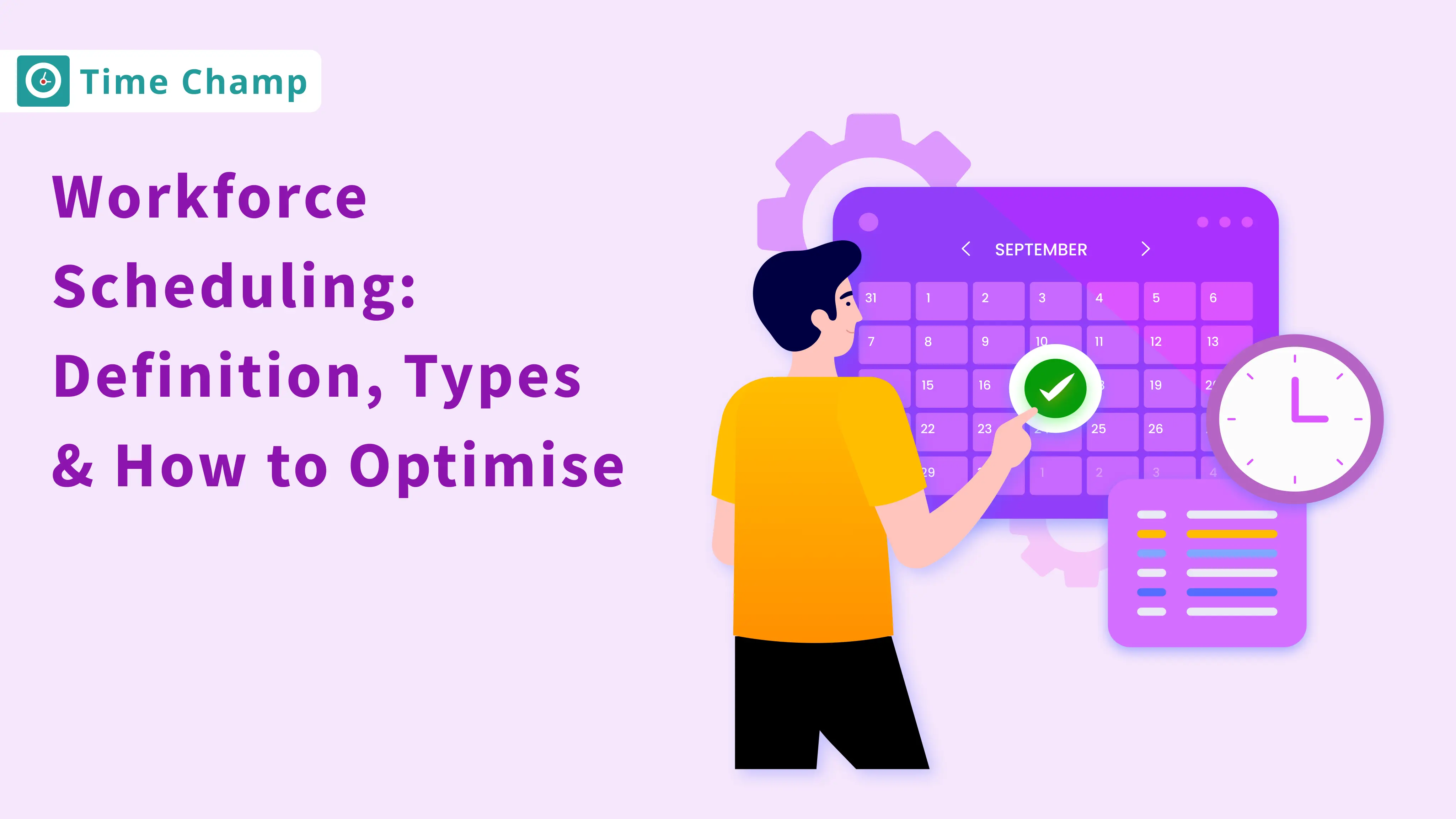
Workforce Scheduling: Definition, Types & How to Optimise
Learn what workforce scheduling is, why it matters, types, optimisation tips, best practices for 2025, and how to choose the right system for your business.
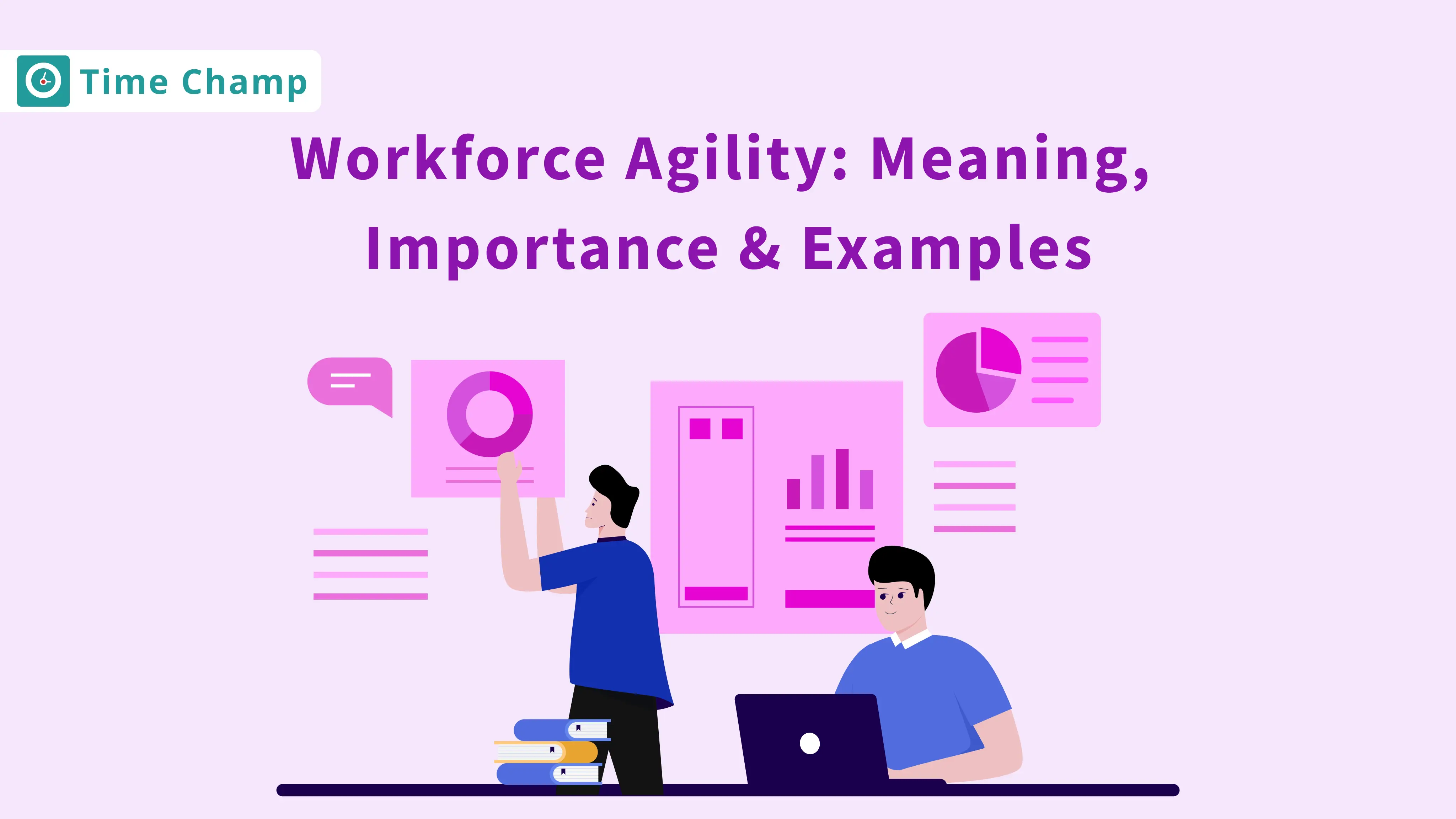
Workforce Agility: Meaning, Importance & Examples (2025)
Discover what workforce agility is, real-life examples, key benefits, challenges, and practical ways to build agility at work while exploring future trends.
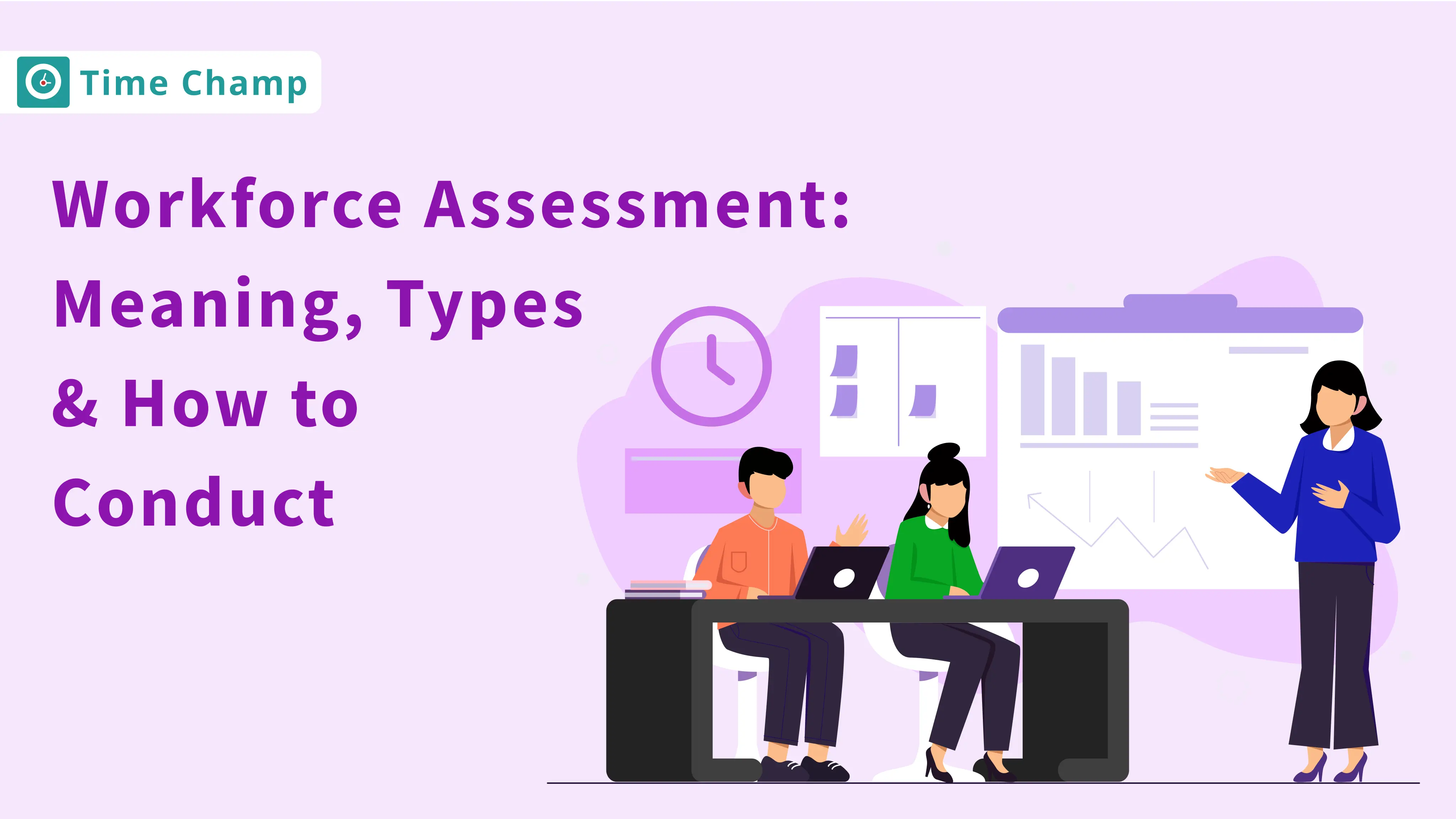
Workforce Assessment: Meaning, Types & How to Conduct (2025)
Understand workforce assessment: definition, types, and step-by-step process. Explore best practices, benefits, and tools to drive smarter talent decisions.
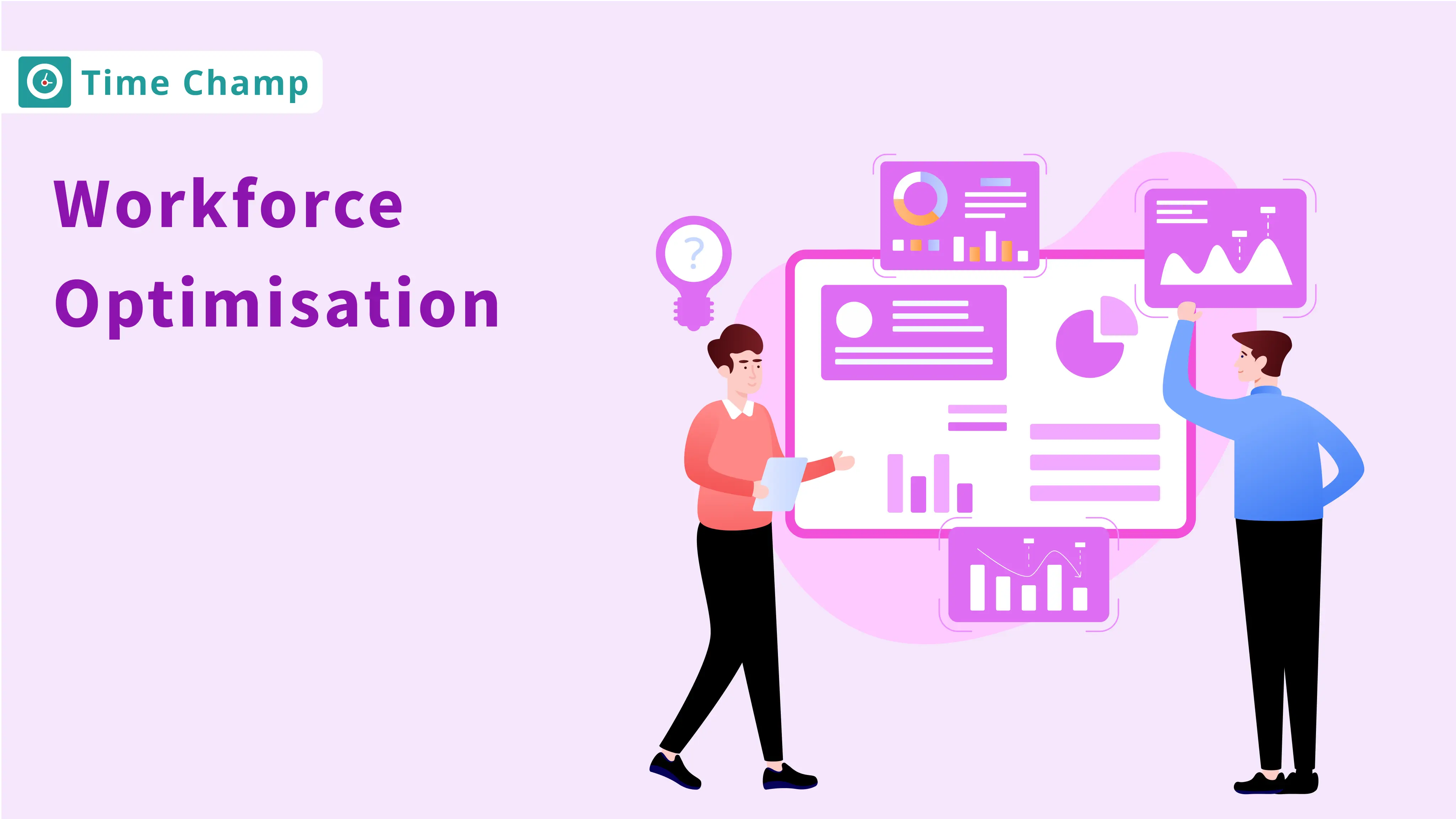
Workforce Optimisation (WFO): A Complete Guide for 2025
Learn what workforce optimisation (WFO) is, how it works, key components, top strategies, industry uses, software tips, and how WFO differs from WEM in detail.
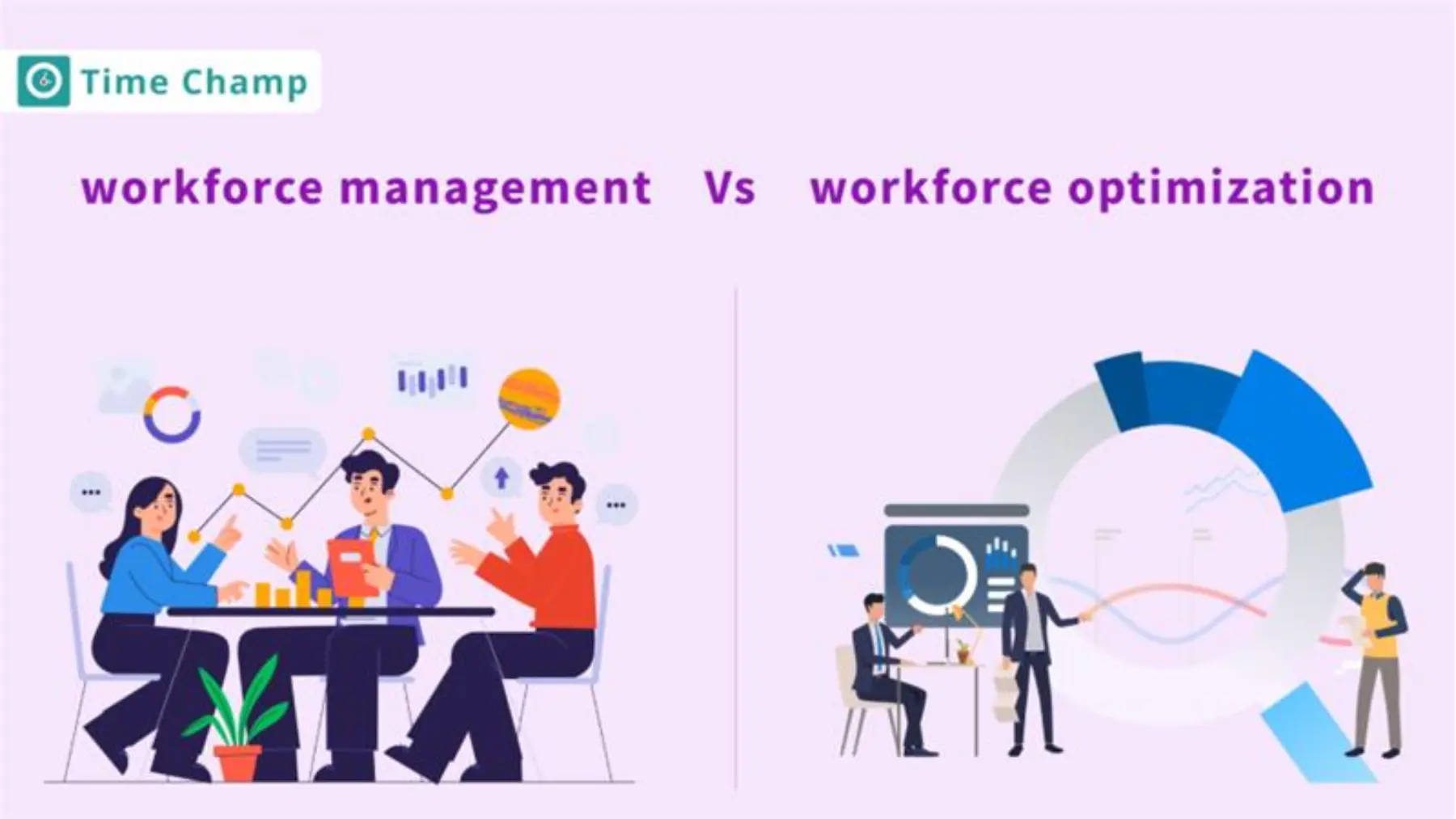
Workforce Management vs Workforce Optimisation [Key Differences]
Workforce Management (WFM) vs Workforce Optimisation (WFO). Learn the definitions, key functions, similarities, and best-fit use cases for businesses.
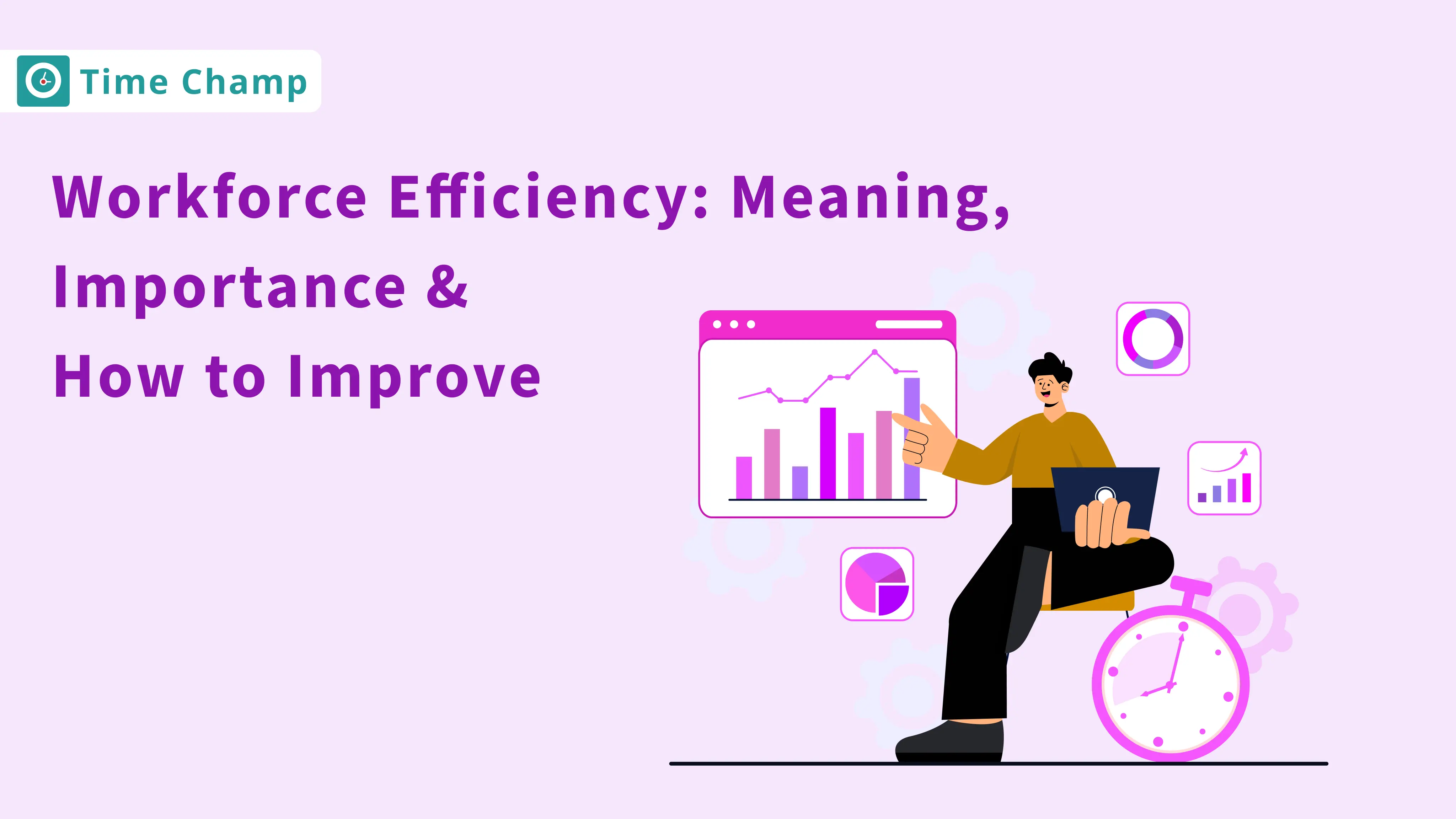
Workforce Efficiency: Meaning, Importance & How to Improve
Learn what workforce efficiency means in 2025, why it matters, key factors, how to measure, tips to improve, and what a good workforce efficiency rate is.

